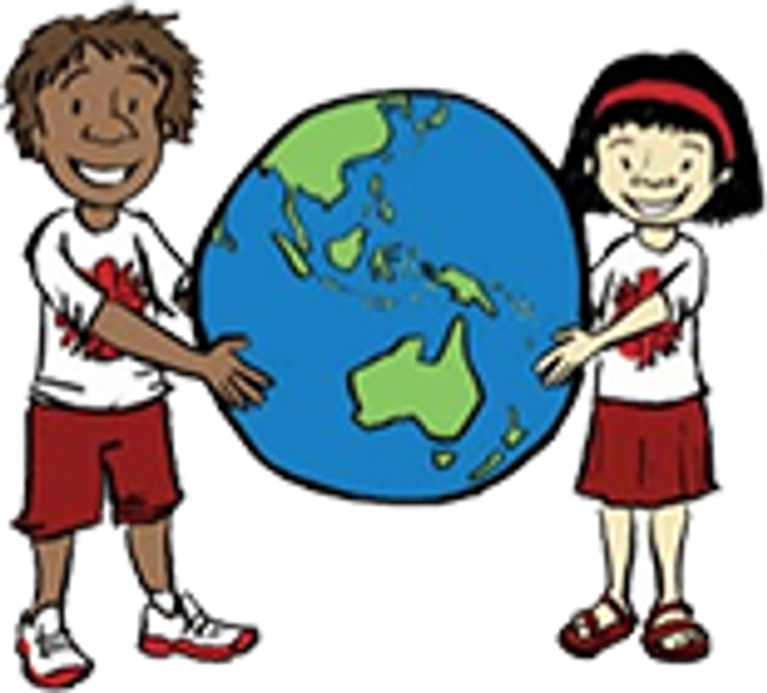Teacher introduction
By the end of this unit students will have learnt about the ways we are globally connected, explored Jesus’ commitment to service and justice, investigated leadership lessons from Scripture and demonstrated on ways of acting justly.
Teachers, before you start:
- Watch the CST ‘Solidarity’ film and familiarise yourself with the Lower Primary cartoon (found within the Learning Experience below).
- Download the various resources referenced at the bottom of this page (worksheets, slides, etc.) and have them ready to go on your computer/interactive whiteboard.
- Locate any Scriptures and copies of Church texts (all hyperlinked within the Learning Experience below).
- Familiarise and decide on the use of online or app technologies.

Learn - Focus
Students learn about the ways we are globally connected.
Select two students. One student reads Galatians 3:28 and the second student reads Mark 12:31
Discuss: What does it mean if we connect these two verses.
Read and display page 1, section 1 of the Solidarity comic. See teacher cartoon
Discuss the cartoon in light of the Scripture: What does the cartoon add to our discussion of the two verses from Galatians and Mark? What does this mean?
Explain that we are all connected, and interdependent.
Explore this interconnectedness. As an example, play the ‘Globally connected’ game. Ask students to find where their clothing, shoes or different items in their desks on in the classroom have been made. Sometimes the origins of these items are very far away and have an impact on the livelihoods of people from different countries and cultures. Discuss the different cuisines that students may have eaten from for dinner or lunch that week.
Teacher’s Note: The notion of showing solidarity through fair trade consumer choices is further explored in secondary school Solidarity learning experience.
Explore further implications of our interconnectedness. As another example, consider world emergencies. If something happens in a part of the world far away from us, does it affect us? Why? How? Can anyone think of any examples?
Emphasise that we are all connected. Global Solidarity means belonging to one human family and knowing that we all have a responsibility to look after one another, no matter what country we are in.
The picture book ‘If the World Were a Village’, written by David. J Smith and illustrated by Shelagh Armstrong could also be read in this stage of the sequence.

Learn - Explore
Students explore Jesus’ commitment to service and justice.
Read and display page 1, section 2 of the Solidarity comic. See teacher cartoon
Use the questions for discussion: Who are the leaders you know? Who do leaders have to think about when they make decisions?
Teacher’s Note: The principle of Solidarity is deepened through the idea that leaders and decision makers need to show solidarity with the world’s poor. This is related to the structural causes of injustice and the need for leaders to show and maintain a concern for the most marginalised and excluded in local and global contexts. This is made personal for young students in the idea that all people can and need to show just leadership in everyday situations. Biblical and historical examples of just leadership are explored at the primary school level to establish strong models. At the high school level, this is expanded to look at the just leadership choices individuals can make and ‘lead in’ every day.

Learn - Demonstrate
Students explore leadership lessons from Scripture.
Leadership Lessons from the Bible
Read and display page 2, section 3 of the Solidarity comic. See teacher cartoon
Discuss: What does Maristely do to help her community? How is she showing God’s love to them? Who is Maristely thinking about when she makes decisions?
List some of Maristely’s qualities as a leader.
Discuss: What does Scripture say about leaders?
Use the ‘12 lessons’ of leadership’ worksheet, containing short summaries of the stories of 12 characters from the Bible and the leadership lessons that can be learned from them.
Cut up and distribute the summary cards without providing the headings – the ‘ leadership lessons’.
In small groups or pairs, students read the summary card and extract the leadership lesson that can be learnt from the character’s story. With the class, students read the story and share their leadership lessons.
The original headings can then be shared in a discussion of what students have gleaned from the texts.
Students select one leadership lesson to reflect on.

Act
Students demonstrate and reflect on ways of acting justly.
Read and display page 2, section 4 of the Solidarity comic. See teacher cartoon
Discuss: What does ‘stand beside’ mean?
How have you as an individual, family, class or school ‘stood beside’ others? Students may suggest donating money during emergencies, or during Christmas appeals, etc.
As a class generate a list: What are some other things that the class or school community could do to help create a better world for people who do not have what they need?
Consider the rings depicted in the cartoon.
As a class or in groups, students design a symbol to display that visually reminds the class of their special job to stand in solidarity and look after each other.

Pray
Reread Mark 12:31
Students silently reflect.
Students record on a blog or written journal a reflective response ‘What would the world be like if everyone loved others as much as themselves?
Related downloads:
- Teacher's cartoon (JPEG, 720KB)
- 12 lessons of leadership worksheet (PDF, 439KB)
- All Middle Primary 'Solidarity' resources (ZIP, 8.4MB)
- CST Prayer (PPT, 4.8MB)